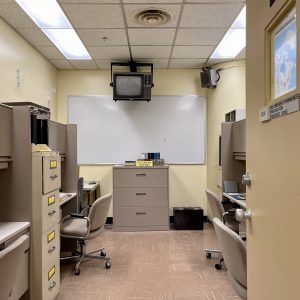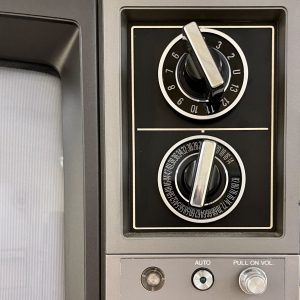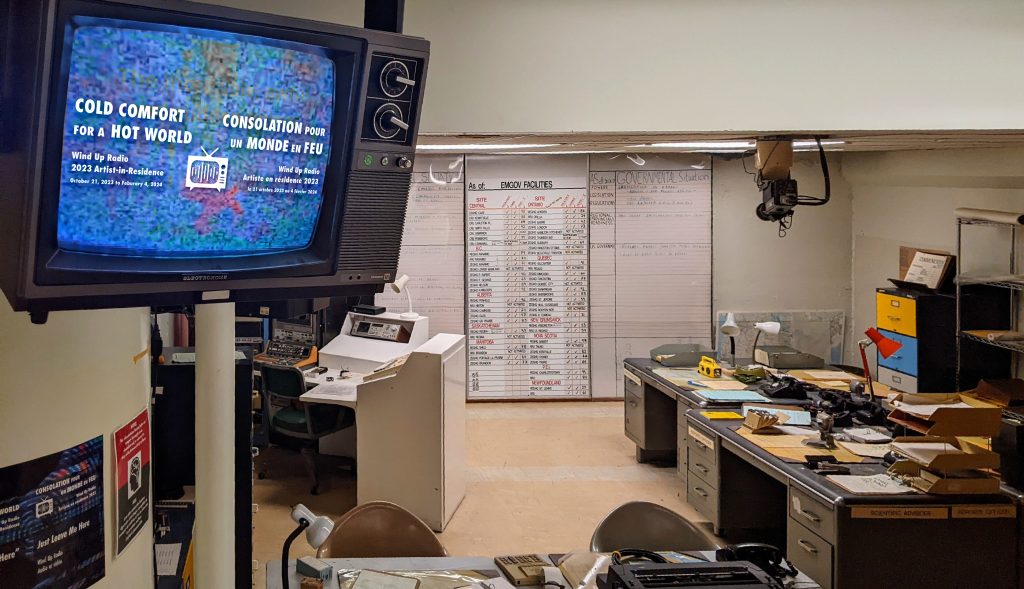
(16/25)
In celebration of the Diefenbunker’s 25th anniversary, we continue to highlight 25 artifacts from within our collections. Today, in recognition of World Day for Audiovisual Heritage and our newly opened 2023 Artist-in-Residence exhibition, we are winding it back to the 1980s and featuring a retro television!

Television, Diefenbunker Museum: 1999.030.047
The Diefenbunker was built between 1959 and 1961 in response to the Cold War and the global concerns surrounding the use of nuclear weaponry. The bunker was originally designed as the centre for Canada’s defence against nuclear attack, and its intended purpose was to house key parliamentary figures underground for a 30-day lockdown period to ensure continuity of government. Given this anticipated reality, it was crucial that there were multiple forms of communication available in order for these government officials to provide updates and directives to one another within the bunker. These lines of communication included radio, telephone, and closed-circuit television.
This retro television from the Diefenbunker’s collections was built by Electrohome, the leading Canadian manufacturer of television sets from 1949 to 1987. This organization was founded in 1907 by Arthur Bell Pollock in Kitchener, Ontario to sell phonographs. They later expanded their practice into television sets, and it was in 1965 when Electrohome produced the first colour television set in Canada, which eventually became their biggest seller in 1969. Electrohome was a Canadian fixture in the stereo and television market until 2008 when it was wound up and sold to the Bluetronics Group in February 2010.

Television, Diefenbunker Museum: 1999.030.047
This particular television in the Diefenbunker is bolted to the wall by a metal bracket in an office space on the 300 Level, but many other television sets exist throughout office and administrative spaces on the 300 and 400 Levels. The model of television is an Electrocolor cathode ray, produced in 1982 in Canada. The set is built on a grey and black plastic frame with a walnut veneer along the sides and the knobs and buttons are a silver-coloured metal. When the unit powers on, two buttons on the control panel light up a bright green. The screen itself is made of bevelled glass, however, most of the weight for the television set comes from the interior components of metal, electronics, and glass.
Several televisions in certain rooms of the building were patched into a swivel-mounted camera. For example, in the Emergency Government Situation Centre (EMGOVSITCEN), a mounted camera in the middle of the room could swivel around to face three maps, which could provide various reports to other televisions in the bunker on the state of the civilian population across the country — this technology can be referred to as an early version of Bunker “Zoom”!
While they are no longer used to communicate throughout the bunker, our 2023 Artist-in-Residence has used this original technology to display aspects of their work. Visit us underground to immerse yourself in the exhibition “Cold Comfort for a Hot World” by Wind Up Radio. This multi-part exhibition uses satirical music and video compositions that contribute to a long history of musical responses to nuclear war. You’ll face terrifying truths as you journey through the exhibition spaces, but you may find yourself humming along to Wind Up Radio tunes as you go.

Stay up to date as we continue to celebrate our 25th anniversary by uncovering stories from our museum’s collections.
